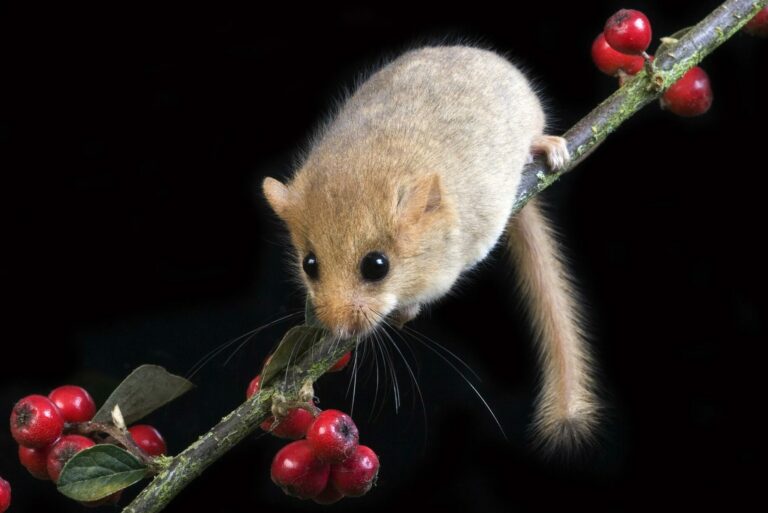Muscardinus avellanarius

The hazel dormouse, belonging to the family Gliridae along with the garden dormouse, tree dormouse, and fat dormouse, measures between 65 mm and 85 mm in head-body length, has a tail length of 55 mm to 80 mm, and can weigh up to 25 g. Muscardinus avellanarius inhabits forests, gardens, or fields (Schaefer 2018). Its fur is grayish to reddish in color. The breeding season typically occurs between June and August, occasionally extending into September. During the colder months, the hazel dormouse enters hibernation, often in self-constructed nests made of grass. Disturbing their hibernation by birds or foxes can be dangerous for hazel dormice and may even result in fatality (Southern 1965).
Diet: Muscardinus avellanarius has a strictly herbivorous diet, primarily consuming fruits, nuts, and seeds (Southern 1965).
Conservation status: Globally, according to the IUCN Red List of Threatened Species, the hazel dormouse is categorized as “least concern.” However, on the Red List of Germany, it is listed as a species of “near threatened” status.
-
Schaefer, M (2018)Brohmer – Fauna von Deutschland. Ein Bestimmungsbuch unserer heimischen Tierwelt: Quelle & Meyer Verlag GmbH & Co.
-
Southern, H (1965)Handbook of British mammals. Mammal society of the British isles. Blackwell Scientific Publications Oxford.